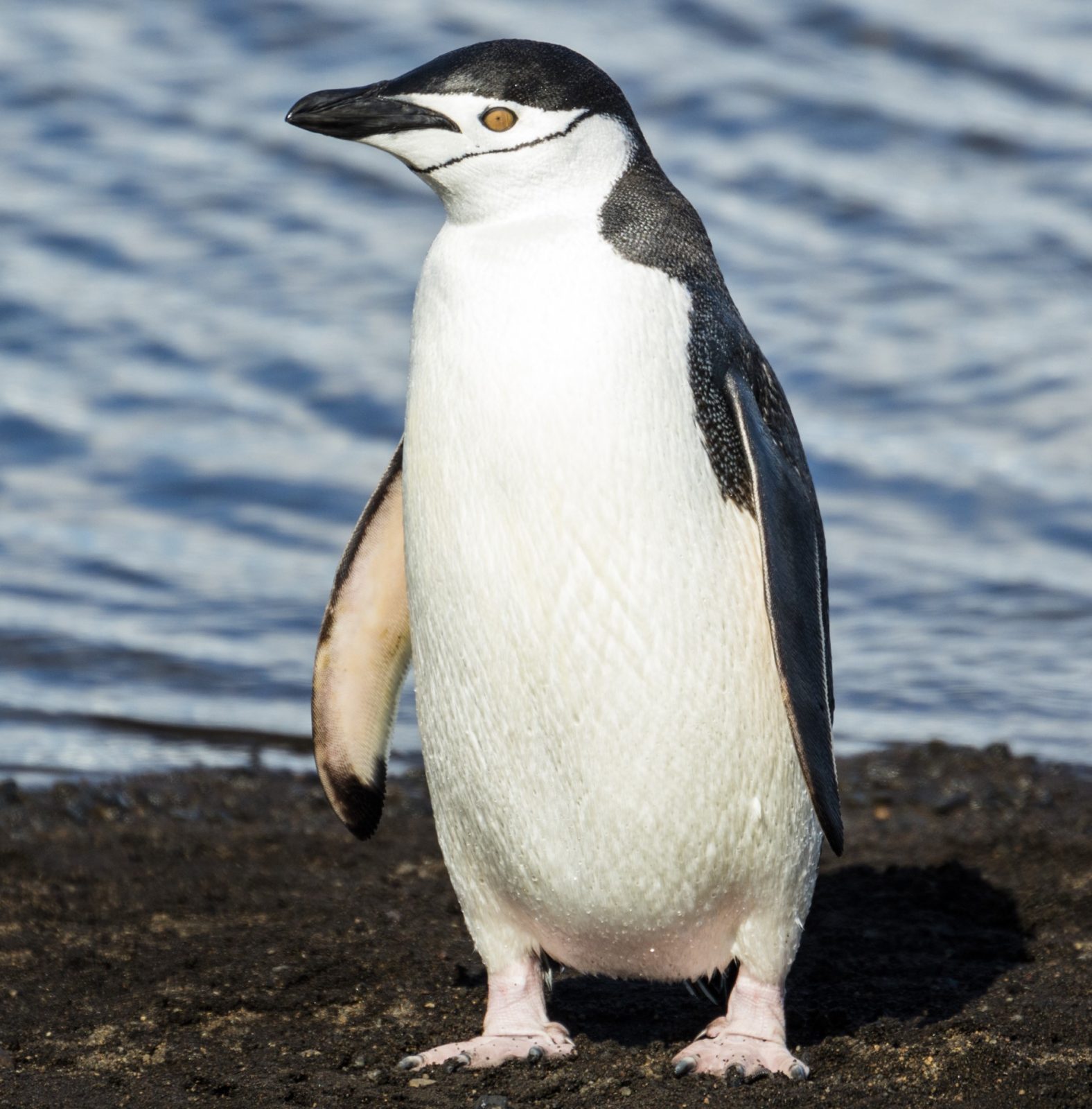
Chinstrap penguin
 Named for the distinctive black line, which runs across their chin (it looks distinctively like a a helmet strap), this species inhabits a variety of islands and shores in the south pacific and the Arctic ocean. other names include ringed, bearded and stonecracker penguin (this last one due to its loud harsh call).
Named for the distinctive black line, which runs across their chin (it looks distinctively like a a helmet strap), this species inhabits a variety of islands and shores in the south pacific and the Arctic ocean. other names include ringed, bearded and stonecracker penguin (this last one due to its loud harsh call).
Being 68-78cm long, and weighing between 3.2 and 5.3kg. While there is variations, as with other penguins, the front is white and the back black, which helps with camouflage in the ocean, as it appears white from below (against the light sky) and black from above (against the dark depths of the ocean).
They eat a mixture of krill, fish squid and shrimp, which they swim as much as 50 miles each day from the shore, in order to find.
They have a number of adaptions to be able to survive in the cold water, which they call home. They have tightly packed feathers, providing a waterproof coat, which enables it to swim in freezing waters. It also has a thick layer of blubber and intricate blood vessels in the flippers and legs. which assist in keeping flippers and legs warm, and not loosing heat.
In the sea, the leopard seal eats a great number of this species, putting down the population between 5% and 20% each time. On land, the brown skua , south polar skua, and southern giant petrel are the primary predators of the penguin, though this is through the eating of these penguins eggs. Antarctic fur seals will also occasional take these penguins.
When it comes to breeding, they build circular nests of stones, within which they lay 2 eggs, which are incubated by both parents taking it in turns (6 days for each shift). Chicks are born after 37 days. They hatch wtih fluffy grey backs and white fronts. They stay in the nest for 20-30 days before they go and join the rest of the chicks in a creche. After a further 50-60 days, they moult and gain their adult feathers, at which time they head out to sea.
Chinstrap penguins are generally considered to be the most aggressive and ill-tempered species of penguin. Chinstrap penguins microsleep over 10,000 times a day and accomplish this in 4 second bouts of sleep. The sleep can be both bihemispheric and unihemispheric slow-wave sleep. The penguins accumulate over 11 hours of sleep for each hemisphere daily.
In 2004, two male chinstrap penguins named Roy and Silo in Central Park Zoo, New York City, formed a pair bond and took turns trying to “hatch” a rock. The rock was eventually substituted for an extra egg from another nest, and the pair subsequently hatched and raised the chick. Penguins by nature hatch eggs and are social creatures. The children’s book And Tango Makes Three was written based on this event. Whether this kind of behaviour is naturally common, as with other species, it appear to have become more common with the increasing temperature (it appears to be having a variety of effects on penguins behaviour).
The last IUCN assessment in 2018 estimated a population of 8 million people and therefore classed them as least concern, though the population is decreasing. The primary threat, as with other penguin species, is climate change. The warming of the water is reducing the number of krill, which means less food for the young, and therefore fewer survive into adulthood. A study in 2019 to Elephant island showed a 50% decrease in the population of the island in just 50 years. Humans do not make the krill situation easier, as we have started catching large amounts of them. Other threats include volcanic events.
Below this text, is a short video on this species, below this is a list of any occasions that this species has been mentioned (if there is nothing in this, hopefully there will be in the future. Should you work in conservation around this species, and would like to publish news from time to time, do let us know.
Below this, we will list any places where you might be able to go and try to see this species in the wild. Should you run some sort of ecotourism around this species (or another) do add your destination through the link on the home page “list your wild place” or indeed click here